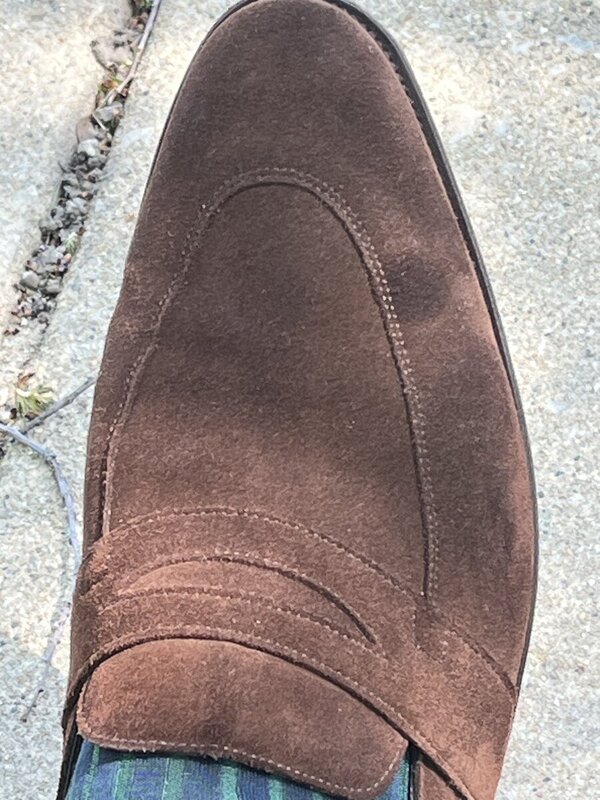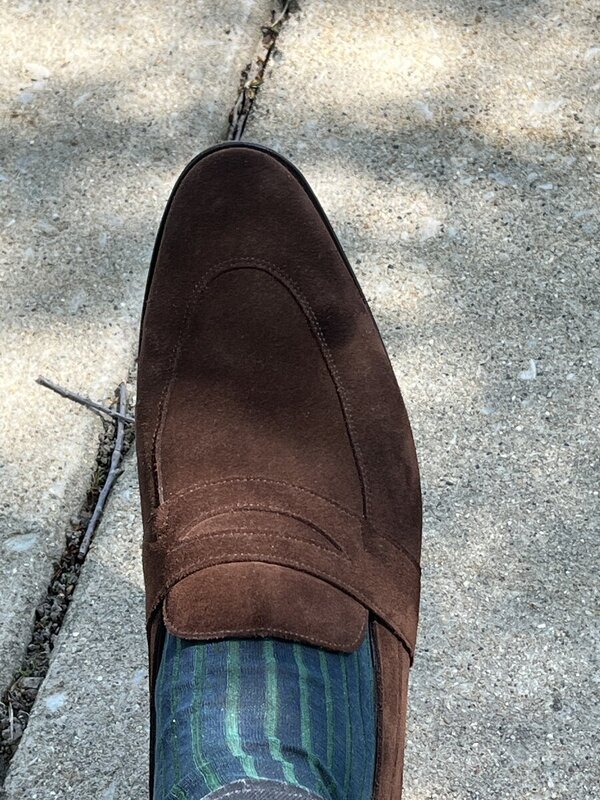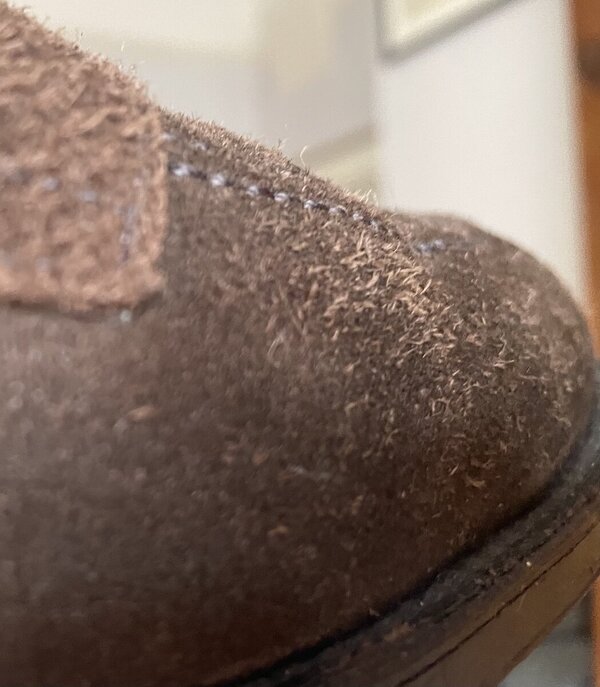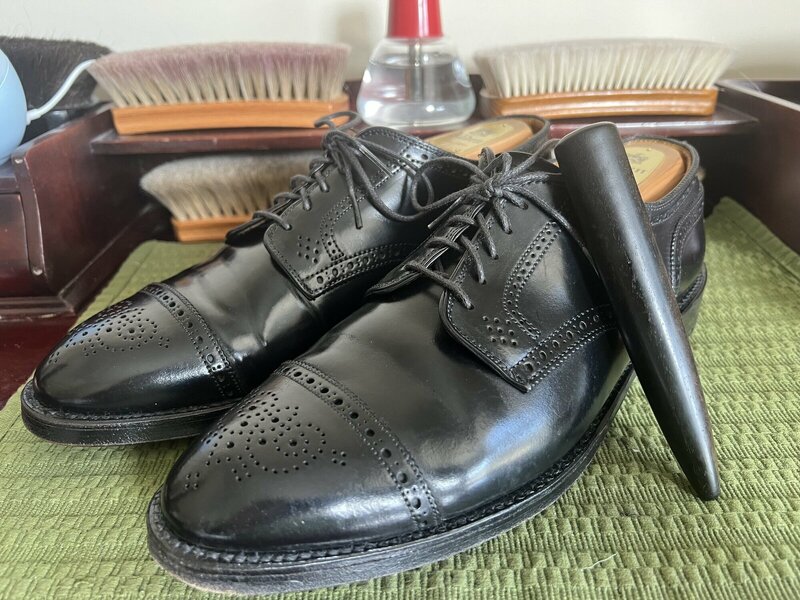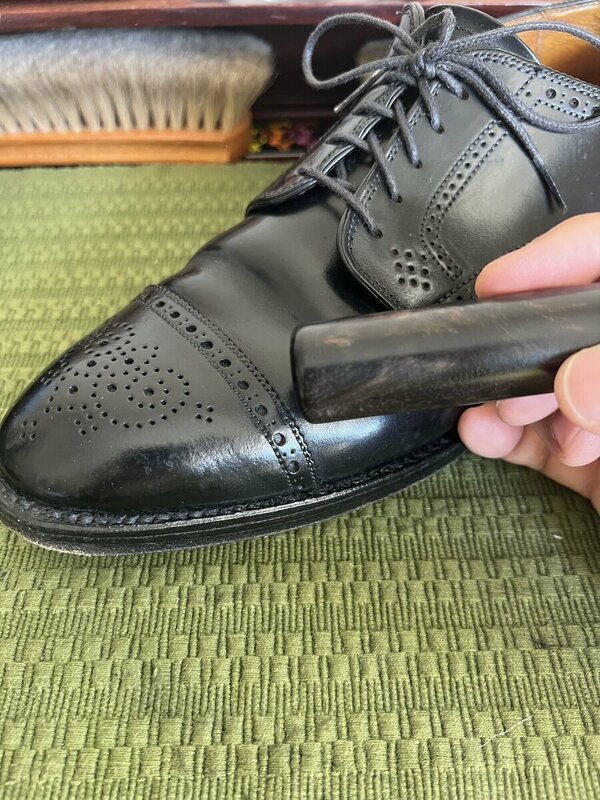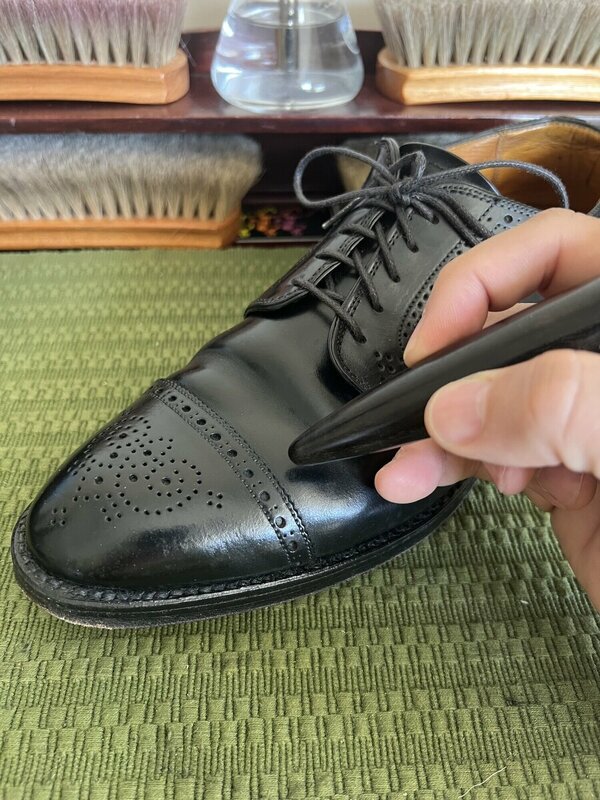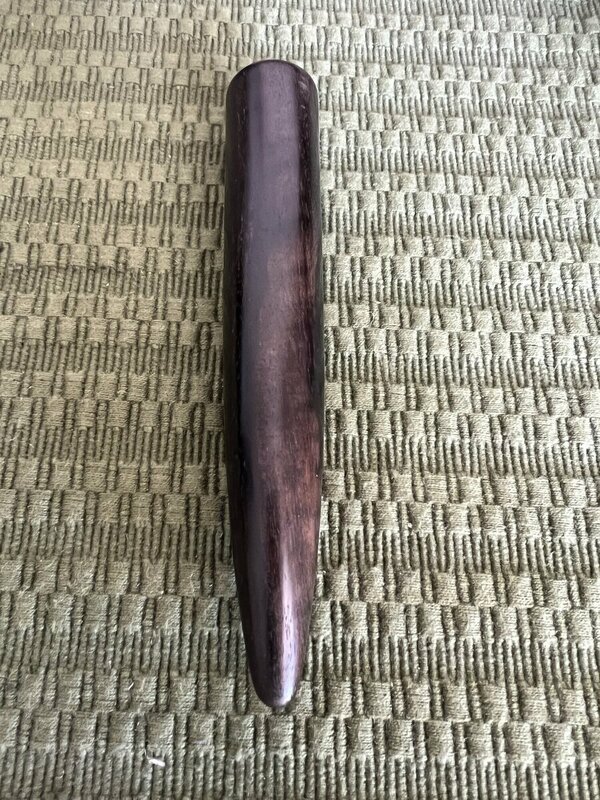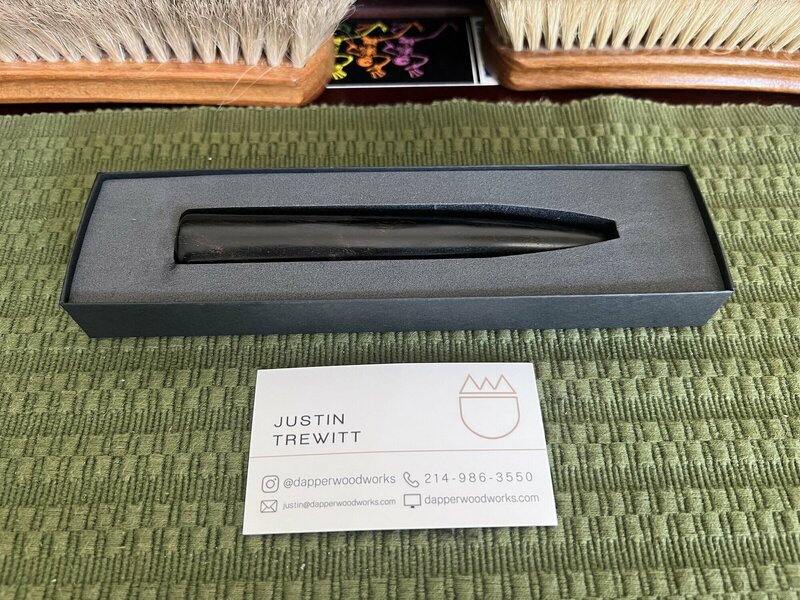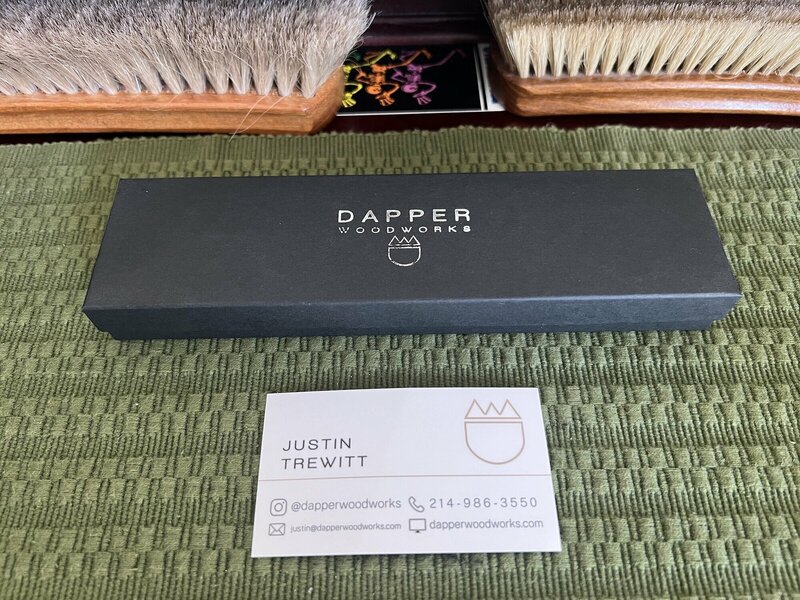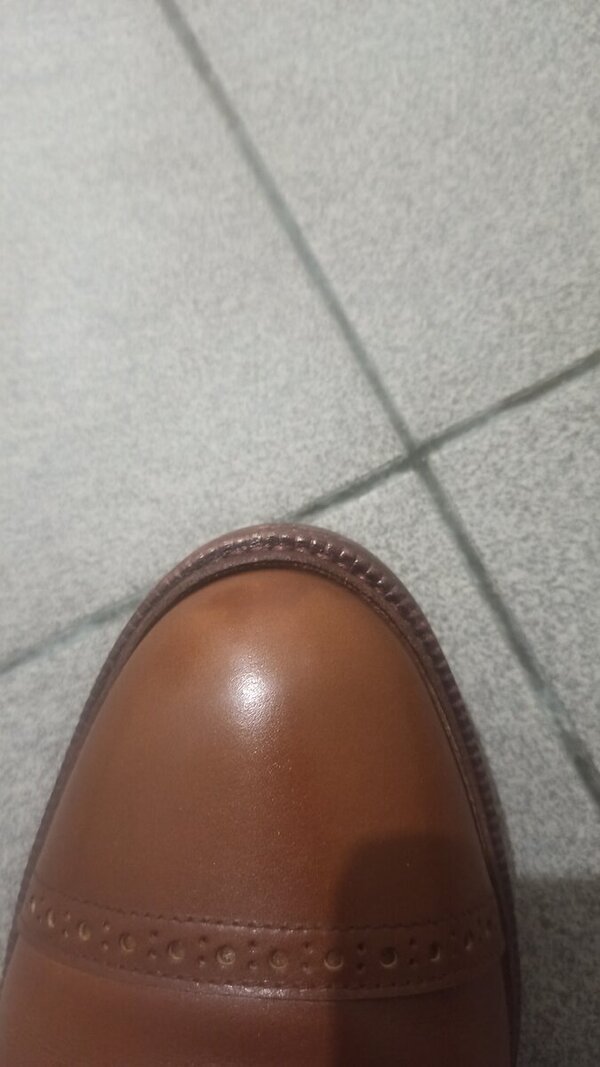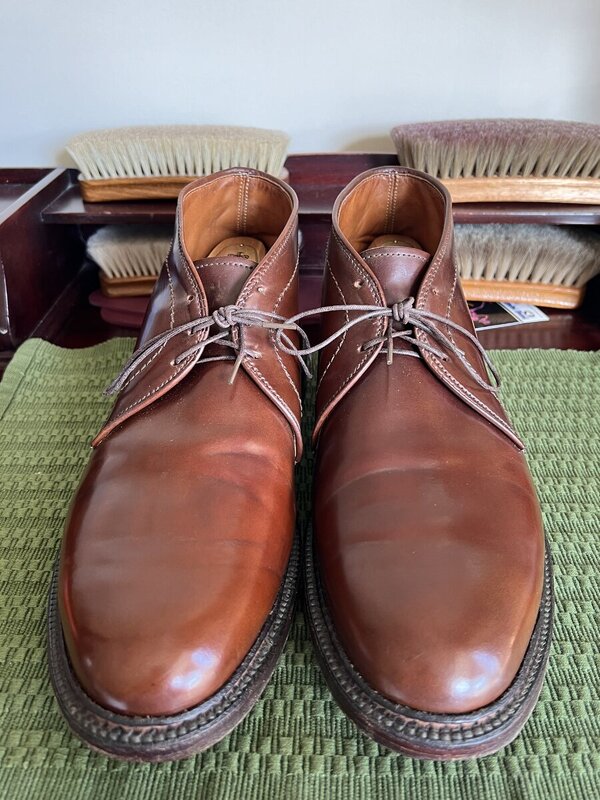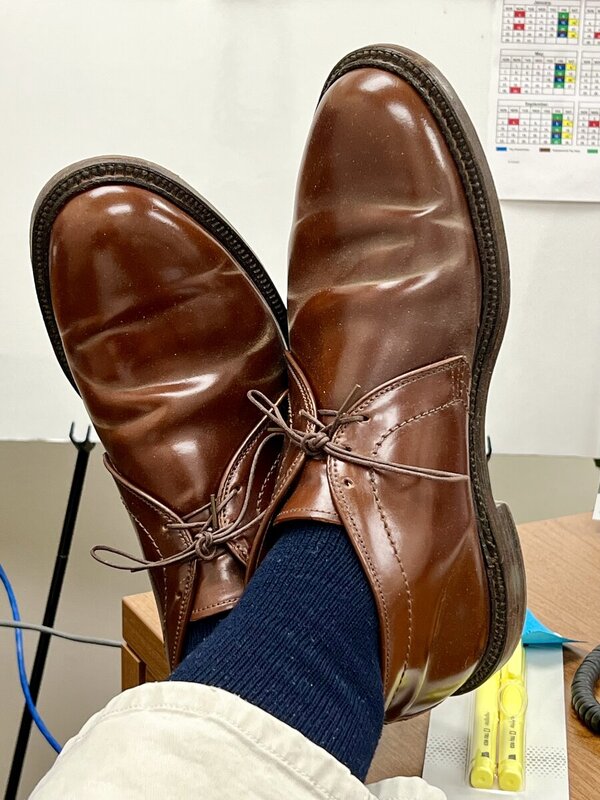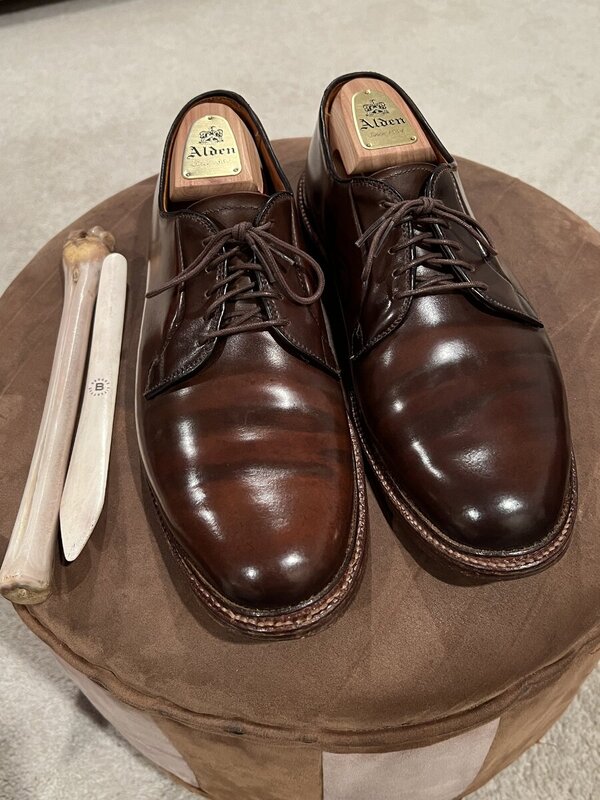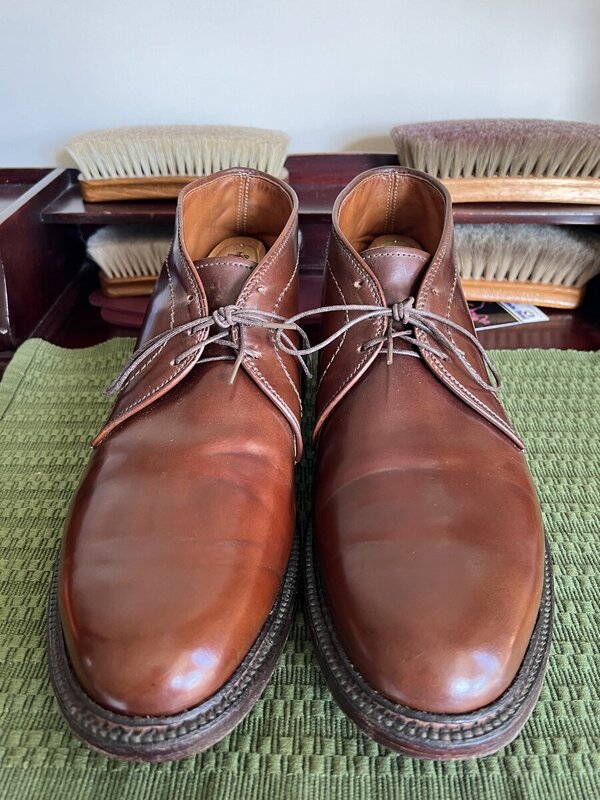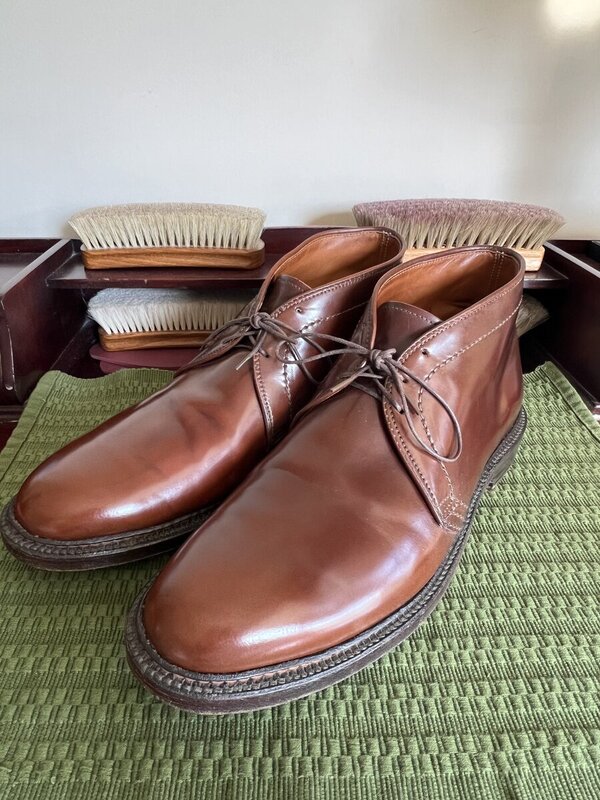Zapasman
Distinguished Member
- Joined
- Oct 2, 2014
- Messages
- 3,726
- Reaction score
- 2,937
There are many ways to piece a heal so you have different types of "hells seems" and different tecniques; dart, dogtail, side seam, patched, back seam "open", back seem open and stiched- down...(DW, Bengal and I think Chogall were very kind with this issue)The heat is some sort of "ironing" that works with the creamy compound.
The seam is literally called "heel seams". I've seen this a lot, from bespoke shoes to even combat boots in the 60s - 70s.
What I meant is that I did not know the type of heel seam this manufacter used in this model and I am not capable to translate it.
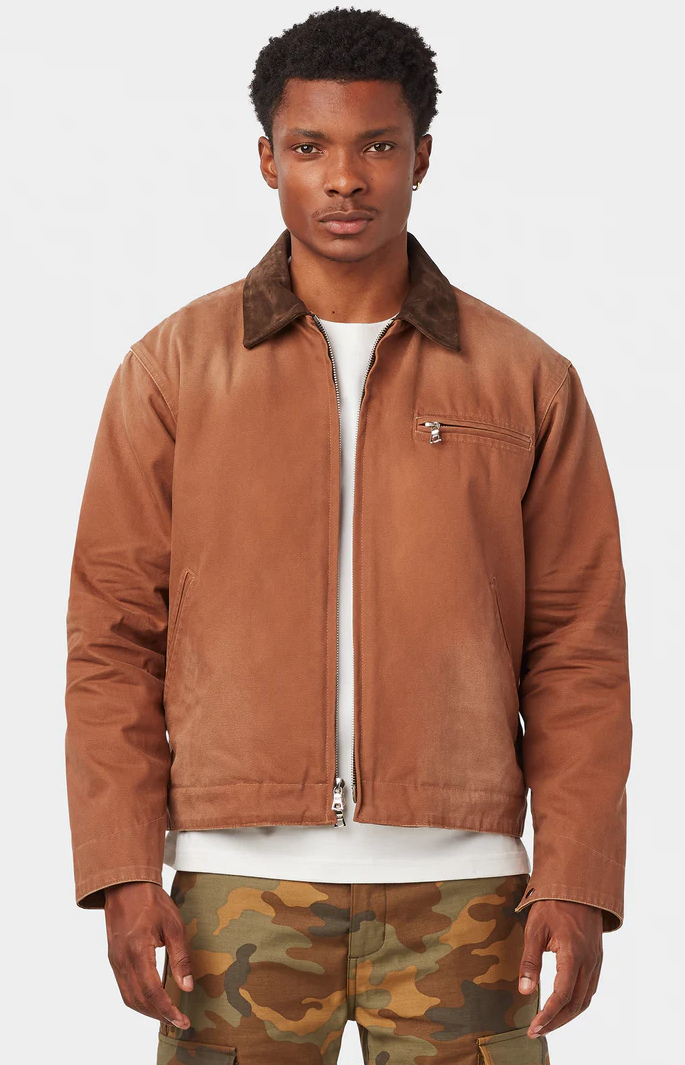

![fing02[1].gif](http://files.styleforum.net/images/smilies/fing02[1].gif)

















